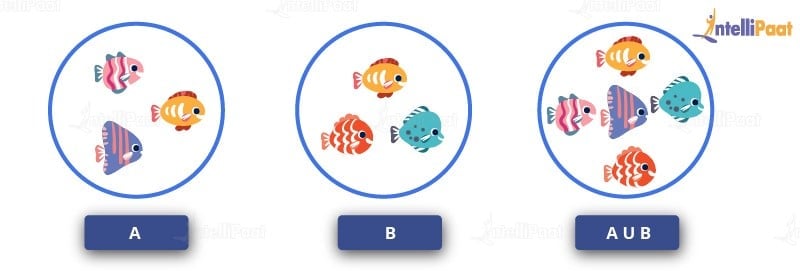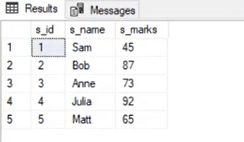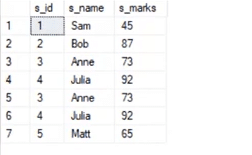1. What is Database?
A database is an organized collection of data, stored and retrieved digitally from a remote or local computer system. Databases can be vast and complex, and such databases are developed using fixed design and modeling approaches.
2. What is DBMS?
DBMS stands for Database Management System. DBMS is a system software responsible for the creation, retrieval, updation, and management of the database. It ensures that our data is consistent, organized, and is easily accessible by serving as an interface between the database and its end-users or application software.
3. What is RDBMS? How is it different from DBMS?
RDBMS stands for Relational Database Management System. The key difference here, compared to DBMS, is that RDBMS stores data in the form of a collection of tables, and relations can be defined between the common fields of these tables. Most modern database management systems like MySQL, Microsoft SQL Server, Oracle, IBM DB2, and Amazon Redshift are based on RDBMS.
4. What is SQL?
SQL stands for Structured Query Language. It is the standard language for relational database management systems. It is especially useful in handling organized data comprised of entities (variables) and relations between different entities of the data.
5. What is the difference between SQL and MySQL?
SQL is a standard language for retrieving and manipulating structured databases. On the contrary, MySQL is a relational database management system, like SQL Server, Oracle or IBM DB2, that is used to manage SQL databases.
6. What are Tables and Fields?
A table is an organized collection of data stored in the form of rows and columns. Columns can be categorized as vertical and rows as horizontal. The columns in a table are called fields while the rows can be referred to as records.
7. What are Constraints in SQL?
Constraints are used to specify the rules concerning data in the table. It can be applied for single or multiple fields in an SQL table during the creation of the table or after creating using the ALTER TABLE command. The constraints are:
- NOT NULL - Restricts NULL value from being inserted into a column.
- CHECK - Verifies that all values in a field satisfy a condition.
- DEFAULT - Automatically assigns a default value if no value has been specified for the field.
- UNIQUE - Ensures unique values to be inserted into the field.
- INDEX - Indexes a field providing faster retrieval of records.
- PRIMARY KEY - Uniquely identifies each record in a table.
- FOREIGN KEY - Ensures referential integrity for a record in another table.
8. What is a Primary Key?
The PRIMARY KEY constraint uniquely identifies each row in a table. It must contain UNIQUE values and has an implicit NOT NULL constraint.
A table in SQL is strictly restricted to have one and only one primary key, which is comprised of single or multiple fields (columns).
CREATE TABLE Students ( /* Create table with a single field as primary key */
ID INT NOT NULL
Name VARCHAR(255)
PRIMARY KEY (ID)
);
CREATE TABLE Students ( /* Create table with multiple fields as primary key */
ID INT NOT NULL
LastName VARCHAR(255)
FirstName VARCHAR(255) NOT NULL,
CONSTRAINT PK_Student
PRIMARY KEY (ID, FirstName)
);
9. What is a UNIQUE constraint?
A UNIQUE constraint ensures that all values in a column are different. This provides uniqueness for the column(s) and helps identify each row uniquely. Unlike primary key, there can be multiple unique constraints defined per table. The code syntax for UNIQUE is quite similar to that of PRIMARY KEY and can be used interchangeably.
CREATE TABLE Students ( /* Create table with a single field as unique */
ID INT NOT NULL UNIQUE
Name VARCHAR(255)
);
CREATE TABLE Students ( /* Create table with multiple fields as unique */
ID INT NOT NULL
LastName VARCHAR(255)
FirstName VARCHAR(255) NOT NULL
CONSTRAINT PK_Student
UNIQUE (ID, FirstName)
);
ALTER TABLE Students /* Set a column as unique */
ADD UNIQUE (ID);
ALTER TABLE Students /* Set multiple columns as unique */
ADD CONSTRAINT PK_Student /* Naming a unique constraint */
UNIQUE (ID, FirstName);10. What is a Foreign Key?
A FOREIGN KEY comprises of single or collection of fields in a table that essentially refers to the PRIMARY KEY in another table. Foreign key constraint ensures referential integrity in the relation between two tables.
The table with the foreign key constraint is labeled as the child table, and the table containing the candidate key is labeled as the referenced or parent table.
CREATE TABLE Students ( /* Create table with foreign key - Way 1 */
ID INT NOT NULL
Name VARCHAR(255)
LibraryID INT
PRIMARY KEY (ID)
FOREIGN KEY (Library_ID) REFERENCES Library(LibraryID)
);
CREATE TABLE Students ( /* Create table with foreign key - Way 2 */
ID INT NOT NULL PRIMARY KEY
Name VARCHAR(255)
LibraryID INT FOREIGN KEY (Library_ID) REFERENCES Library(LibraryID)
);
ALTER TABLE Students /* Add a new foreign key */
ADD FOREIGN KEY (LibraryID)
REFERENCES Library (LibraryID);


















No comments:
Post a Comment